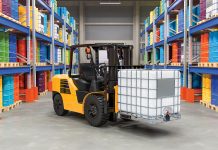By Dr. Thomas Berbner
Director Business Development Chemicals EMEA
Knoell Germany GmbH
How did you get involved in chemical regulations?
From my studies in biology with a special emphasis on aquatic toxicology I was always interested in the effect of chemical substances on aquatic organisms. From there my jobs finally brought me to environmental risk assessments and chemicals regulations.
What is the big difference comparing chemicals regulations to biological testing?
Animal tests and alternative methods are the basis for the implementation of any chemical regulation. Test results are used by the regulations to determine hazards and risks. Tests provide a result; the regulations use and integrate them into a full picture that enables the determination whether the intended use of the substances pose risk to man and/or the environment.
How does knoell exactly act in the field of chemicals regulations?
Our company has a very diverse structure of employees. knoell combines scientific knowledge from highly experienced colleagues, like (eco)toxicologists with the in-depth knowledge of our regulatory staff. Hence, we are able to provide the full range of getting a chemical, chemical product or article on the market.
We accompany our clients during the setup of any registration strategy. If testing cannot be avoided, e.g. by using in-silico tools like QSARs, we also manage the testing phase by providing study monitoring, data gap analysis, technical writing, exposure assessments and subsequently the risk assessment, finally to prepare the required dossier for the authorities.
And where do you provide such services?
We are serving all global markets. We have subsidiaries throughout Europe, the United States, China, Taiwan, Japan, Thailand and South Korea. Hence, we provide our services for every chemical regulation and any kind of use.
What are the biggest challenges to get a product on the market?
Whereas it appears to be well defined how to act for chemical substances, it is getting more complicated when dealing with chemical mixtures or finished articles. Chemical substances are more or less well-defined materials (excluding UVCBs). For a substance you provide tests, you determine hazards and exposure and finally come to conclusions about potential risks.
If you want to bring a mixture on a market you may be in need of additional information.
And what information is this?
You need to know the full composition of your mixture and derive the used volumes. The composition is needed, since you have to check with the chemical regulation in your target market, whether all substances are in line with the regulation, e.g. already listed in a local inventory or not. The volumes are required, since there may be different obligations depending on the total amount of substance used.
However, many companies consider the full composition of their products as business confidential information.
How is the required information then passed down in the supply chain?
The globally used standard communication tool is the Safety Data Sheet (SDS). SDS are used for substances and mixtures. The SDS serves the communication of hazards of the used products. Therefore, an SDS only covers the components of a mixture that contribute to the overall hazard. You will not find the full composition in there.
To get the full composition of a mixture you need to get in touch with your supplier and ask either for the full composition or whether all components in the mixture fulfill the regulatory obligations in the target market.
You may also involve a trustee in the communication. It gets the full composition from the supplier, checks the product for regulatory compliance in the target market and then reports the status to the client.
knoell has a team solely serving the trustee function.
You were also talking about finished articles. What is the problem there?
Articles are different to substances and mixtures. They work by their design, surface and form, not through their chemical composition. An easy example is a cup. It is irrelevant whether it is made of metal, wood or china.
However, it is necessary to have knowledge about the substances in an article, since they may pose a risk to man and/or the environment.
You may imagine that it might not be very healthy to use a cup made of lead instead of stainless steel.
Therefore, article producers need to know whether substances of concern are used in their raw materials.
Further, there are additional regulations for specific product groups (e.g. in Europe the Toy Directive or the Directive on the Restriction of Hazardous Substances (RoHS) in electronics equipment).
How will the future look like for chemical regulations?
Chemical regulations are known since the early 70’s. A milestone certainly was the implementation of the European Regulation (EC) 1907/2006 (REACH) in 2007.
This set a new standard and several chemical regulations in other parts of the world were influenced by REACH. For example, you may check the current version of K-REACH in South Korea or the new KKDIK regulation in Turkey.
In the United Nations “Strategic Approach to International Chemicals Management (SAICM)” many nations share their intentions for chemicals management systems.
I am convinced that we will see more countries implementing such systems, since the protection of the environment and the human health is in my opinion also the key to sustainable economic success.









